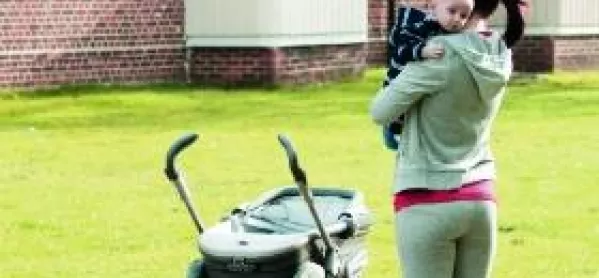The pioneering sex education work at a Scottish school, where pupils attend a drop-in clinic and older students teach their younger peers, is set to be extended in a bid to tackle teenage pregnancy.
Kirkcaldy High School in Fife runs a sexual health and pregnancy prevention clinic where pupils receive free condoms and a school nurse offers pregnancy testing and advice. A peer education project runs alongside the clinic, and S5 students are set to mentor pupils lower down the school from next term. A sex and relationships education programme for single-gender groups is also in place.
The scheme’s success has been such that Fife Council said it had plans to roll out the initiative to other schools in the area.
Fife has some of the worst levels of deprivation and teenage pregnancy in the country. The most recent figures, published last month, reveal that in 2012 teenage girls in the poorest areas of Scotland were 12 times more likely to fall pregnant than those from the wealthiest communities. The data also shows that Fife has the highest pregnancy rates on mainland Scotland for under-18s and under-20s, at 33.7 per 1,000 and 48.4 per 1,000, respectively. It is a different story for the under-16s, however.
In 2010, pregnancies in this age bracket in Fife were recorded at 9.2 per 1,000, the highest in the country. But since the Kirkcaldy High clinic was established in 2011, rates have fallen. In 2012, the figure was 6.6 per 1,000, Scotland’s third highest level.
Separate figures for the Kirkcaldy High catchment area collected by NHS Fife as part of the initiative suggest that the school’s innovative approach has played a key role in driving pregnancies down. Rates among under-16s in that area have fallen from 14.2 per 1,000 in 2010 to 8.6 per 1,000 in 2013.
Children 1st, Scotland’s leading charity for young people, supports extending the project, which several other schools in Scotland are understood to be keen to implement.
Chief executive Alison Todd said: “We know that on the whole what we’re doing at the moment is not working. You can see that from the figures. What it seems like Kirkcaldy is doing is listening to children and young people and to what works in other countries, and trying something new and innovative to address the issue.
“It’s also very clear that involving young people and children in decision-making is when you get the best solutions and the best engagement.”
Derek Allan, headteacher at Kirkcaldy High, said: “We set up the clinic because it was quite obvious from the 2010 statistics that young girls were not engaging with the services they were entitled to. The school’s clinic offers them the same service that any kids of 16 in Scotland can get, but we’ve taken away the barrier of having to go to a doctor or a hospital.”
Earlier this year the school won an award from local authorities body Cosla in recognition of its “exceptional achievement in exceptional circumstances” in improving teenage sexual health and reducing unwanted pregnancies.
The Scottish government also supports moves to expand the scheme to other regions of the country.
Although teenage pregnancy in Scotland has fallen in recent years, the new statistics show that the national rate for under-16s remained the same in 2011 and 2012, at 5.6 per 1,000.
Tayside recorded the highest pregnancy rate for under-16s in 2012 at 7.8 per 1,000, while Highlands had the lowest rate at 3 per 1,000.



